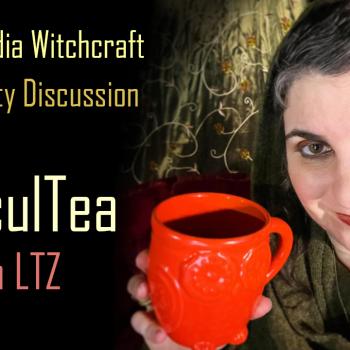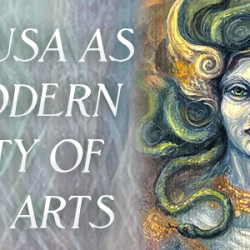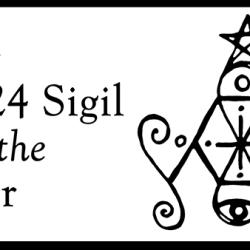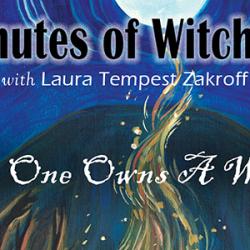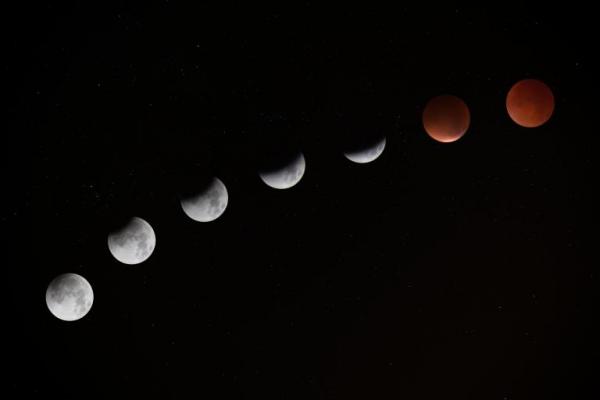
In my recent post “4 Things People Confuse in Witchcraft That Drive Me Crazy” I included the bullet point of the terms black and white magick/Witchcraft. I mentioned that ‘“White” as good and “Black” as bad is so seeded in bullshittery I could devote whole posts to just that.’ Well, enough people asked me about it (including quite a few in person over the last couple of weeks) that I’m following through on exactly that.
Some people expressed the opinion that they feel like everything is oversensitive and over-analyzed these days. I have two things to say about that:
-My position on these terms has been the same for spanning over 20 years now. (i.e., nothing new to me)
-Introspection is hard work, change is inevitable, critical thinking never goes out of style, and being on the cultural receiving end of bullshit, even if it’s unintentional is even more exhausting than you having to examine words. (Ok, so that’s 4 in one, so I guess I had 5 things to say to that.)
Another thing some folks said: “But I don’t mean it in that way. I’m talking about beneficial versus harmful magick. I’m not a racist.” No one said you were, and we’ll unpack that in a bit.
What I said in the original post:
“Magick doesn’t have a color. “White” should not be equated with “good” stuff while “black” is equated with “bad” stuff – it is steeped in racial bias and cultural undertones that need to get buried – last century. Things that one person may consider harmful, another person may consider beneficial – all that’s different is the perspective. Workings done with good intentions can cause undesirable consequences – and vice versa.”
Yeah, I packed a lot in there. So let’s pull it apart. But note that I am coming at all of this from the standpoint of a Modern Traditional Witch. I’m not a ceremonial magician, or a Wiccan. This is my view and experience of the world, and I also acknowledge there are other viewpoints out there.
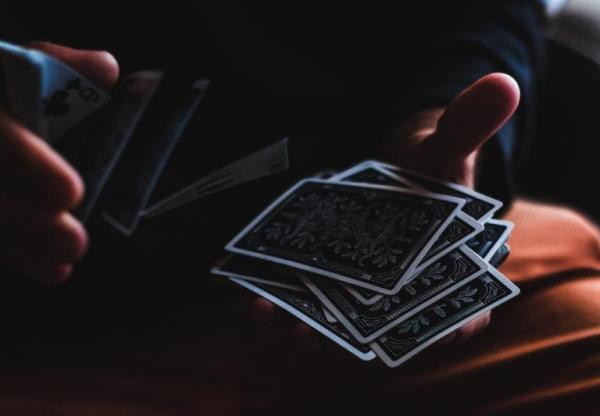
Magic Defined or Defiled
When I talk about magick or magic, I’m attempting to name the force or action that is the essence of change combined with spirit of influence. To me, either variation of the word falls short of really capturing that, but until I or someone else comes up with a better word that also enables mutual understanding, we’re using magic. Magic is like both the space between neurons and the message that is relayed through it. You could see magick as the friction of threads being woven as they pass by each other, and the pattern they create together. This force and reality is essentially – again for lack of a better word – neutral.
If you search on the Internet for the differences between white vs. black magic, you’ll find the following most common associations across a variety of websites (I was tempted to pull quotes from sites, but some of them are such visual eyesores, full of misinformation, and/or plagiarized from other sites that I loathe to link them…):
White magic – magic that is used for good, healing and protecting people, positive vibrations and lifting energy/white light, powered by love, used by Wiccans/Pagans, natural magic, right-hand path
Black magic – magic that is used for bad purposes, to harm or attack people, for malicious workings, animal sacrifices, powered by fear, used by devil worshipers/Satanists, selfish purposes, chaotic, negative/dark/sucking energy, unnatural, left-hand path
There’s so much convolution contained in that comparison, it makes me a bit ill. So let’s try and break it down as simply as possible. Because I could probably write a whole book on just this topic.

The Fault of Intention & Why It Doesn’t Really Count:
Through the lens at how I defined magic itself, imagine a hammer. If you use that hammer to build something constructive like a house, you could say it’s a white hammer. But if you use it to hit someone over the head, you might say it’s a black hammer. You could say that your intention is what defines whether it’s good or bad, white or black.
But what if that house you’re constructing – with the best of intentions – obstructs your neighbor’s view, or destroys a natural habitat just by existing? And what if that skull-crushing hammer fends off a known killer and saves the life of a whole family? As the saying goes, “the road to hell is paved with good intentions.” You can have the best of intentions and cause a lot of harm. Inversely, in a moment of destruction, you can save and protect life. You can factor initial intention in all you want, but at the end of the day, there will be an array of “positive” and “negative” outcomes to any action. And how the whole situation is viewed, depends upon the perspective of society’s mirror at that given moment.
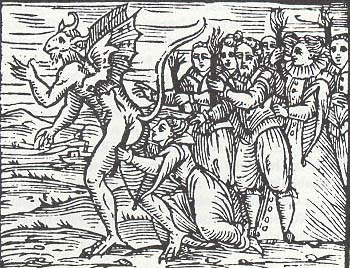
Society’s Skewed Mirror & Divinely Approved Workers
Around the 15th Century (as evidenced by grimoires dating from this time), we see the rise of interest in alchemy – particularly among wealthy, upper-class men. Reaching back to King Solomon and utilizing Jewish mysticism, they claimed divine inspiration and sought to distinguish themselves from folkloric magic or Witchcraft. You know, the practices of poor people (and mainly women) that could easily get you punished or killed if you upset the wrong person. High or white magic belonged to the realm of God, while low or black magic must surely be from the devil.
Prior to this particular age of Christianity with its heaven/hell dichotomy, if you look at mythology all over the world, you will find that those that worked magic in general were both feared and respected. Why? Because society recognized that the Witch could equally harm as well as heal. They could break a curse, and they could help you get back at the person who cursed you. The stories of Circe, Medea, Baba Yaga, Cerridwen, Coyote, Anansi, and the Djinn all show this ability to exercise both malevolent and benevolent workings – to name just a few!
As we know from extensive research, what folks call “the Burning Times” wasn’t so much about killing actual Witches, as it was about social dynamics. Witchcraft became the scapegoat of those looking to achieve economic gain, exercise spiritual control, remove undesirables, re-target blame, and retaliation. Sure, the local healer might have saved your life last winter with her medicine, but since she turned down your unwanted sexual advances last week and your cow died (from old age), surely it’s black magic! But alchemy, as practiced by rich white dudes who donate to get whole churches built – it’s the work of angels! God-given, clergy-approved!
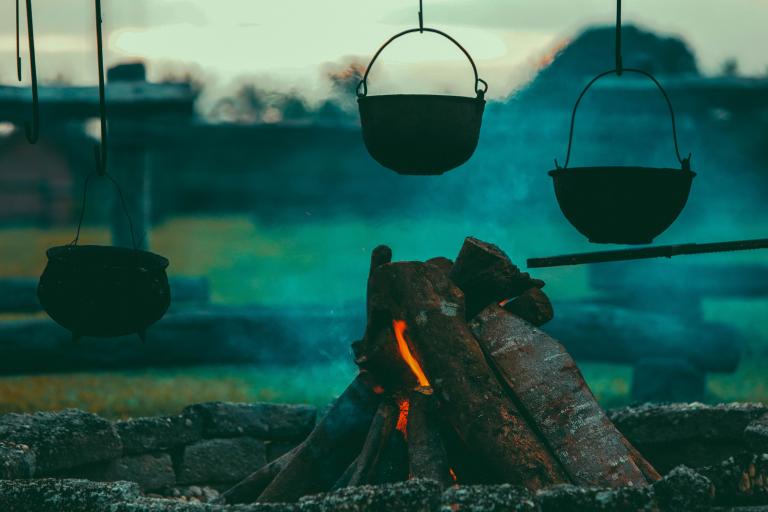
So here’s where we really start to see the cultural separation of what is sanctioned and unsanctioned magic. If it’s done by wealthy, scholarly people (and largely men) who are in the good graces of the Church or rulers – it’s good/white magic. If you’re poor, female, unpopular, foreign, under-educated, then it’s probably bad/black magic. And whether that will be the end of you depends on how your society feels about you and your actions on a given day.
Enter the Racial Undertones
As Christianity invaded the rest of the world as a cover for stealing land and resources, it was common practice to forbid and outlaw the native/indigenous practices of the “colonized” people and those forced into slavery. From Tituba of the infamous Salem Witch Trials to Obeah laws in Jamaica, black skin was synonymous with black magic = something evil. If it called upon non-Christian deities, if it involved animals and charms, and especially if it was done by people of color, it was definitely NOT associated with “good” magic. Moving further along we see a rise in racial-focused tension and othering in the 19th century – ranging from the American Civil War to unrest in the British Empire, following through past World War II and the Civil Rights movement.
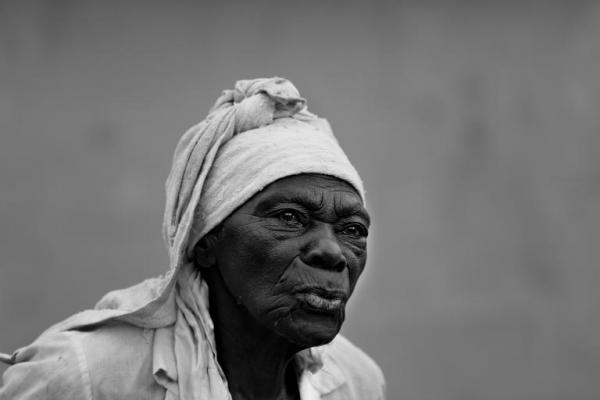
Fine Lines & Fictional Fodder
Whether conscious of these tensions and biases or not, much of the literature of the 19th and 20th century reflects this black/bad and good/white association. We are always a product of our times. In both their fiction and non-fiction, we see many of the prominent minds of Spiritualism, modern magical societies, and similar mystical movements seeking to separate out themselves as doing good/white/light/divinely-approved work. They did not want to be confused with anything evil/dark/black/devil-worshiping.
There is the interesting example of Jamaican author Herbert George de Lisser’s 1929 popular novel The White Witch of Rosehall. It tells the legend of Annee Palmer, a woman of Irish and English descent who was raised by a Haitian nanny after her parents died from yellow fellow. She supposedly learned witchcraft and voodoo from her nanny, and used it to tragic ends. Now here white refers to Annee’s skin color, not that she was doing “white magic.” The emphasis and blame is placed squarely on the magic of her Haitian nanny. Again, black magic = evil.
Post WWII and the Civil Rights Era – in both Europe and America, we see a definitive rise in “White Witches” as a means to disassociate Witchcraft from anything bad/negative to improve its public image. “Oh, my granny was a white witch” was a commonplace expression to say that granny did healing, maybe used herbs, and had other superstitions she practiced – but she was a good Christian lady! I think there’s a lot of grannies who would be greatly surprised by being called witches by their progeny.
Of course, if you have one extreme, you must have the other – manufactured or otherwise insinuated – like the Satanic Panic . I don’t even have the time or space to go into the negative associations usually placed on people who even just wear the color black, but just ask your local Goth. Battling social misconceptions is hard work regardless.
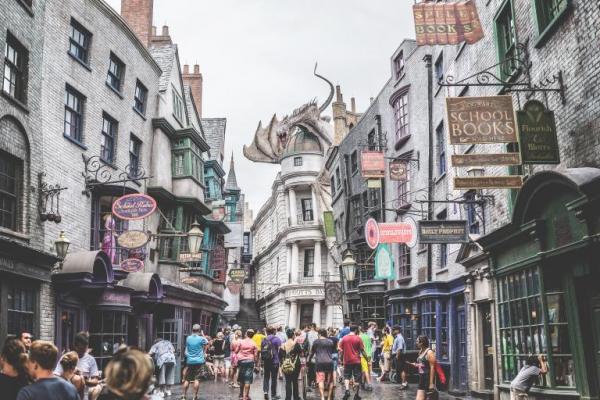
And I haven’t even touched upon writers like C.S. Lewis or J. R. R. Tolkien. Both men whose lives spanned the 19th and 20th centuries and whose work greatly influenced games like Dungeons & Dragons. Which, whether folks like to admit it or not, has had a huge influence on many modern Pagans. Games have rules and systems, and we tend to internalize whatever media and vocabulary we use. It’s very easy to lose the roots and nuanced meanings over decades and centuries.
You might not have made that connection, and I seriously doubt that most folks who currently use the terms white/black magic are trying to be consciously racist (or misogynistic)- at all. You’re simply referring to what you originally learned. And now you’ve learned some new things.
Magic doesn’t have a color.
I’ve seen some folks try to connect magic, energy, color, and light. They talk about white as being positive, increasing, love and logic, while black is being negative, decreasing, chaos, and destruction. It’s often presented as science…with very little science applied. Creation and destruction, life and death are a constant cycle – not two ends of a chart. If you look at how light and color behaves – white reflects all color, while black absorbs all color. There’s nothing negative, positive, increasing, or decreasing about that. (What about the entire spectrum? And don’t forget there’s a difference between light theory and color theory…) The womb is dark to incubate, dark soil gives life through the particles of death, there’s life in the darkest parts of the ocean and in the blackest of caves. Deserts with their long-present and extreme exposure light can burn and kill. Nature refuses to follow neat and tidy axis charts.

Neither does being a jerk.
Sure some folks love embracing dangerous labels. (Hello, I’m a Witch!) But that doesn’t mean their label (or what people associate with that label) reflects the whole nature of the work they do. We live in a time where the Church of Satan and similar organizations people may deem as “black magic” are doing incredible outreach and social programs to help people – all without mandating any religious doctrine upon the people they help. There aren’t a lot of Christian organizations that can make that claim. There are plenty of people claiming to be white-light gurus who are manipulators, scam-artists, and abusers.
Really, if you’re constantly doing work to hurt and harm people purely out of spite, that doesn’t mean you’re working “black magic.” It means you’re a jerk who needs to grow up and learn a few things.
In Summary
The notion of white/black magic does a poor job of describing much of anything, from how magic works to who does it. These terms are extremely limited and full of baggage that dates back centuries. It’s time to step back and see the bigger picture.
Magic is both simple and amazingly complex. It is an ancient tool, an integral part of us – natural and mysterious. We work with it, and it works with us, far beyond what we can imagine or realize. Throughout the centuries, there have been numerous self-appointed gatekeepers trying to separate humans from magic, to sanction and control those who seek to use it. Labeling magic as black or white is another attempt at separating us from our humanity and each other. The Witch uses magic to reconnect with the world and nature in all of its being – outside imposed lines of gender and culture.
One Additional Note: In recent years, people of color (particularly those identifying as Black) have sought to reclaim black magic as discussed above to Black magic as a way to express their cultural power and knowledge. If it’s not clearly understood by the small novel that I just wrote above, I’m completely in support of that movement and I hope that this post might aid in that redefinition.








